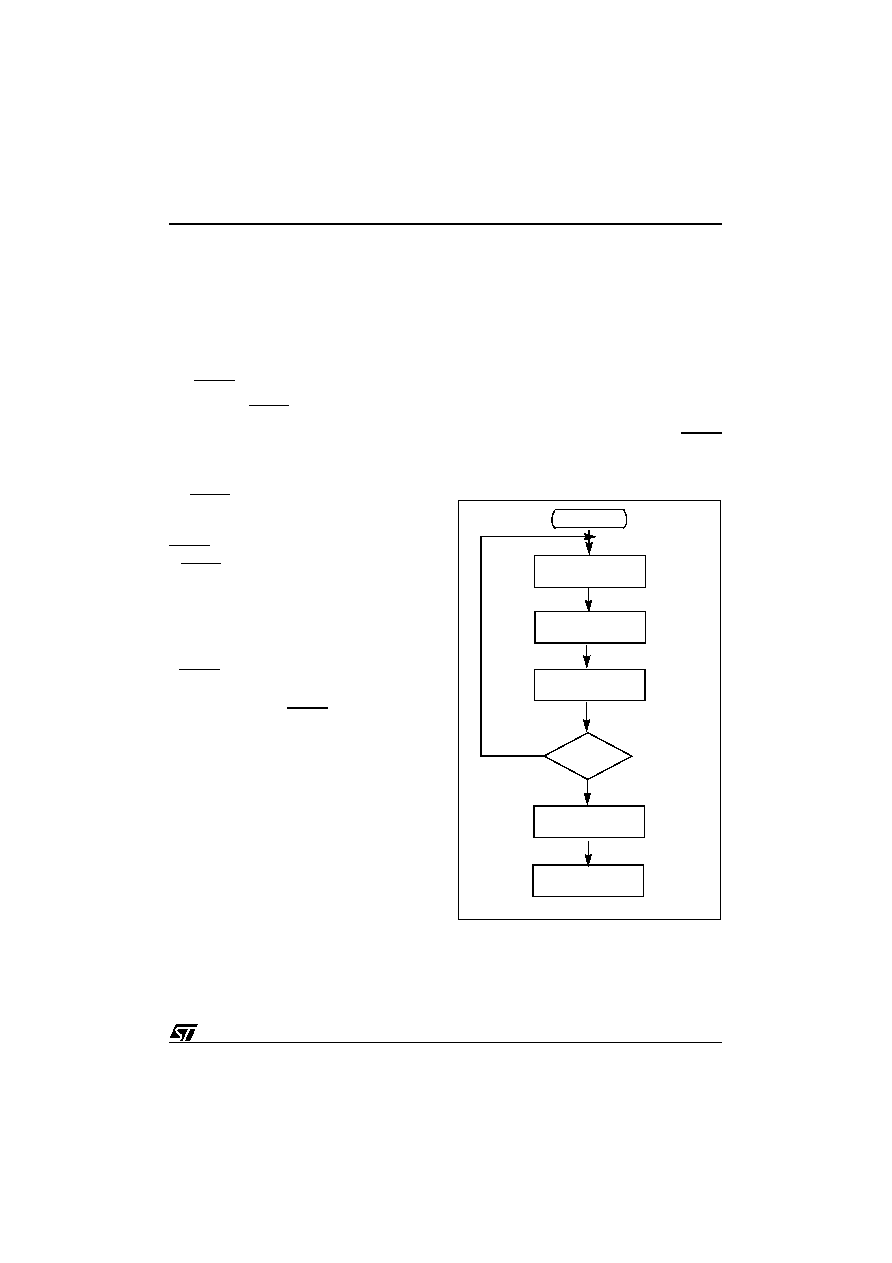- 您现在的位置:买卖IC网 > PDF目录69349 > ST6253CB1/XXX (STMICROELECTRONICS) 8-BIT, MROM, 8 MHz, MICROCONTROLLER, PDIP20 PDF资料下载
参数资料
| 型号: | ST6253CB1/XXX |
| 厂商: | STMICROELECTRONICS |
| 元件分类: | 微控制器/微处理器 |
| 英文描述: | 8-BIT, MROM, 8 MHz, MICROCONTROLLER, PDIP20 |
| 封装: | 0.300 INCH, PLASTIC, DIP-20 |
| 文件页数: | 15/83页 |
| 文件大小: | 1809K |
| 代理商: | ST6253CB1/XXX |
第1页第2页第3页第4页第5页第6页第7页第8页第9页第10页第11页第12页第13页第14页当前第15页第16页第17页第18页第19页第20页第21页第22页第23页第24页第25页第26页第27页第28页第29页第30页第31页第32页第33页第34页第35页第36页第37页第38页第39页第40页第41页第42页第43页第44页第45页第46页第47页第48页第49页第50页第51页第52页第53页第54页第55页第56页第57页第58页第59页第60页第61页第62页第63页第64页第65页第66页第67页第68页第69页第70页第71页第72页第73页第74页第75页第76页第77页第78页第79页第80页第81页第82页第83页

22/83
ST6253C ST6263C ST6263B ST6260C ST6260B
3.2 RESETS
The MCU can be reset in four ways:
– by the external Reset input being pulled low;
– by Power-on Reset;
– by the digital Watchdog peripheral timing out.
– by Low Voltage Detection (LVD)
3.2.1 RESET Input
The RESET pin may be connected to a device of
the application board in order to reset the MCU if
required. The RESET pin may be pulled low in
RUN, WAIT or STOP mode. This input can be
used to reset the MCU internal state and ensure a
correct start-up procedure. The pin is active low
and features a Schmitt trigger input. The internal
Reset signal is generated by adding a delay to the
external signal. Therefore even short pulses on
the RESET pin are acceptable, provided VDD has
completed its rising phase and that the oscillator is
running correctly (normal RUN or WAIT modes).
The MCU is kept in the Reset state as long as the
RESET pin is held low.
If RESET activation occurs in the RUN or WAIT
modes, processing of the user program is stopped
(RUN mode only), the Inputs and Outputs are con-
figured as inputs with pull-up resistors and the
main Oscillator is restarted. When the level on the
RESET pin then goes high, the initialization se-
quence is executed following expiry of the internal
delay period.
If RESET pin activation occurs in the STOP mode,
the oscillator starts up and all Inputs and Outputs
are configured as inputs with pull-up resistors.
When the level of the RESET pin then goes high,
the initialization sequence is executed following
expiry of the internal delay period.
3.2.2 Power-on Reset
The function of the POR circuit consists in waking
up the MCU by detecting around 2V a dynamic
(rising edge) variation of the VDD Supply. At the
beginning of this sequence, the MCU is configured
in the Reset state: all I/O ports are configured as
inputs with pull-up resistors and no instruction is
executed. When the power supply voltage rises to
a sufficient level, the oscillator starts to operate,
whereupon an internal delay is initiated, in order to
allow the oscillator to fully stabilize before execut-
ing the first instruction. The initialization sequence
is executed immediately following the internal de-
lay.
To ensure correct start-up, the user should take
care that the VDD Supply is stabilized at a suffi-
cient level for the chosen frequency (see recom-
mended operation) before the reset signal is re-
leased. In addition, supply rising must start from
0V.
As a consequence, the POR does not allow to su-
pervise static, slowly rising, or falling, or noisy
(presenting oscillation) VDD supplies.
An external RC network connected to the RESET
pin, or the LVD reset can be used instead to get
the best performances.
Figure 14. Reset and Interrupt Processing
INT LATCH CLEARED
NMI MASK SET
RESET
( IF PRESENT )
SELECT
NMI MODE FLAGS
IS RESET STILL
PRESENT?
YES
PUT FFEH
ON ADDRESS BUS
FROM RESET LOCATIONS
FFE/FFF
NO
FETCH INSTRUCTION
LOAD PC
VA000427
相关PDF资料 |
PDF描述 |
|---|---|
| ST6265BB3/XXX | 8-BIT, MROM, 8 MHz, MICROCONTROLLER, PDIP28 |
| ST6255CB1/XXX | 8-BIT, MROM, 8 MHz, MICROCONTROLLER, PDIP28 |
| ST62T65CB3 | 8-BIT, OTPROM, 8 MHz, MICROCONTROLLER, PDIP28 |
| ST6265BB6/XXX | 8-BIT, MROM, 8 MHz, MICROCONTROLLER, PDIP28 |
| ST6265BM1/XXX | 8-BIT, MROM, 8 MHz, MICROCONTROLLER, PDSO28 |
相关代理商/技术参数 |
参数描述 |
|---|---|
| ST6253CB3 | 制造商:STMICROELECTRONICS 制造商全称:STMicroelectronics 功能描述:8-BIT OTP/EPROM MCUs WITH A/D CONVERTER, SAFE RESET, AUTO-RELOAD TIMER, EEPROM AND SPI |
| ST6253CB3/XXX | 制造商:STMICROELECTRONICS 制造商全称:STMicroelectronics 功能描述:8-BIT OTP/EPROM MCUs WITH A/D CONVERTER, SAFE RESET, AUTO-RELOAD TIMER, EEPROM AND SPI |
| ST6253CB6 | 制造商:STMICROELECTRONICS 制造商全称:STMicroelectronics 功能描述:8-BIT OTP/EPROM MCUs WITH A/D CONVERTER, SAFE RESET, AUTO-RELOAD TIMER, EEPROM AND SPI |
| ST6253CB6/XXX | 制造商:未知厂家 制造商全称:未知厂家 功能描述:8-Bit Microcontroller |
| ST6253CM1 | 制造商:STMICROELECTRONICS 制造商全称:STMicroelectronics 功能描述:8-BIT OTP/EPROM MCUs WITH A/D CONVERTER, SAFE RESET, AUTO-RELOAD TIMER, EEPROM AND SPI |
发布紧急采购,3分钟左右您将得到回复。